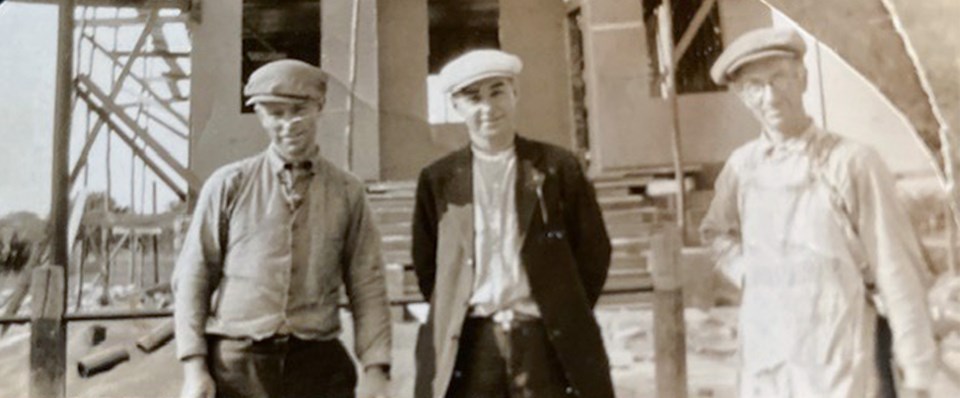Tom St. Amand
The area of north Sarnia today, home to Tyrie Drive, looked vastly different in the 1940s, says Illa Bullock, 85.
“It was just a large grassy field then, dotted with some oak trees, and at the east end near what is now St. Giles Church property were large bushes,” she recalled.
“And the beach was more expansive, for sure. To get to the lake, I remember having to walk though high grasses, shrubs, and beech trees that protected the sand.”
Bullock is a granddaughter of Robert and Ann Tyrie, who left Scotland to settle the land they purchased north of Lakeshore Road in the early 1890s.
The couple had four children —Robert, Helen, James, and Alex—and lived in a large, two-storey home that stood in the middle of the property, said Bullock, who often spent time there with father, Alex.
The homestead’s driveway began halfway down what today is Tyrie Drive West, and the backyard — home to chickens and a garden Mrs. Tyrie tended — extended to the east edge of the property.
In the early 1920s the family built a number of mid-sized cottages, which were rented to tourists eager to spend summer days on Lake Huron’s sandy shores.
The beach-goers had begun arriving in 1904 on the Sarnia Street Railway. Its streetcars took passengers from downtown Sarnia and the passenger ferry dock to the lake near Baxter Park.
The ‘Beach Line’ followed Cemetery Road (now Colborne Road) but the exact location of its terminus remains a bit of a mystery.
A map suggests the station was at Baxter Park, but anecdotal evidence suggests the line might have reached McMillen Parkway or points east. Severed pieces of the iron rail track have been found at the north end of Tyrie Drive East, and the south end of Tyrie Drive West.
Bullock doubts the turnaround was as far east as the Tyrie property. Her father described beachgoers and dances, but never spoke of streetcars on her grandparents’ property, the Sarnia woman recalled.
“My father would have mentioned that for sure.”
A day at the beach was a popular pastime for people of all ages, who came to swim, and picnic and play games.
When the Lake Huron Hotel opened in 1907 on the shore between McMillen Parkway and Tyrie Drive, its facilities and popular dance pavilion attracted even more visitors.
The golden era of Sarnia’s tourism beach boom ended abruptly in the mid-1930s. Anne Tyrie died in 1928 and her husband followed in 1936, a year after the Lake Huron Hotel burned to the ground. The fire also destroyed three adjacent cottages, one of them belonging to Robert Tyrie. The Sarnia Street Railway shut down in 1931.
Alex Tyrie, who was a carpenter like his father, was instrumental in developing the land named for the family. He owned a construction company that built reasonably sized and affordable homes on several city streets.
Tyrie turned his attention to the family property off Lakeshore in the 1940s.
Like Dr. Andrew McMillen, who developed nearby McMillen Parkway, Alex Tyrie wanted average wage earners to enjoy the area and the lake’s pleasures.
The homes he built on Lakeshore and Tyrie Drive East and West were comfortable, mid-sized and affordable, selling in the 1940s for about $8,000.
A good deal then, and a great deal now for anyone living on the historic Tyrie property.
Tom St. Amand is a retired high school teacher, regular contributor and The Journal’s quizmaster
